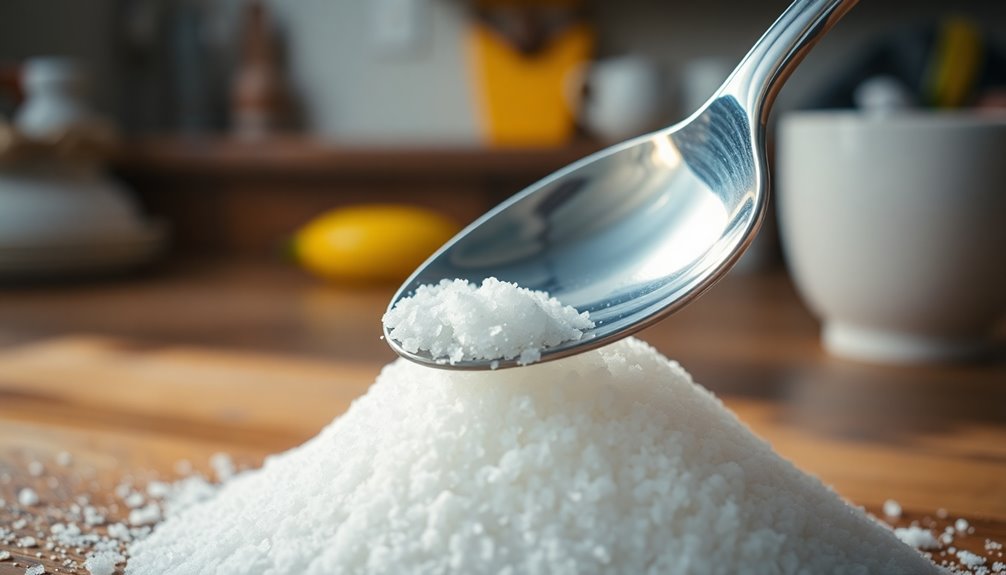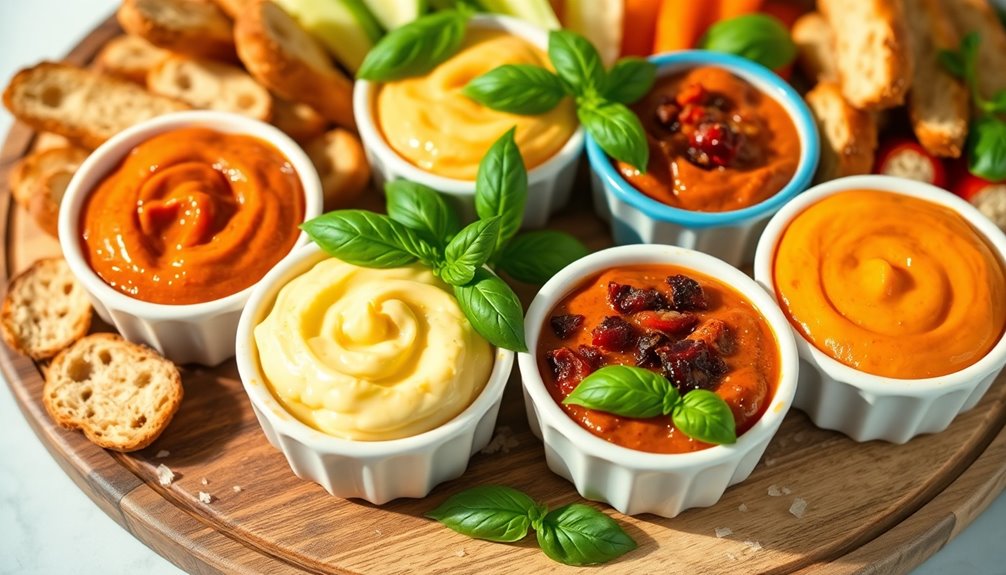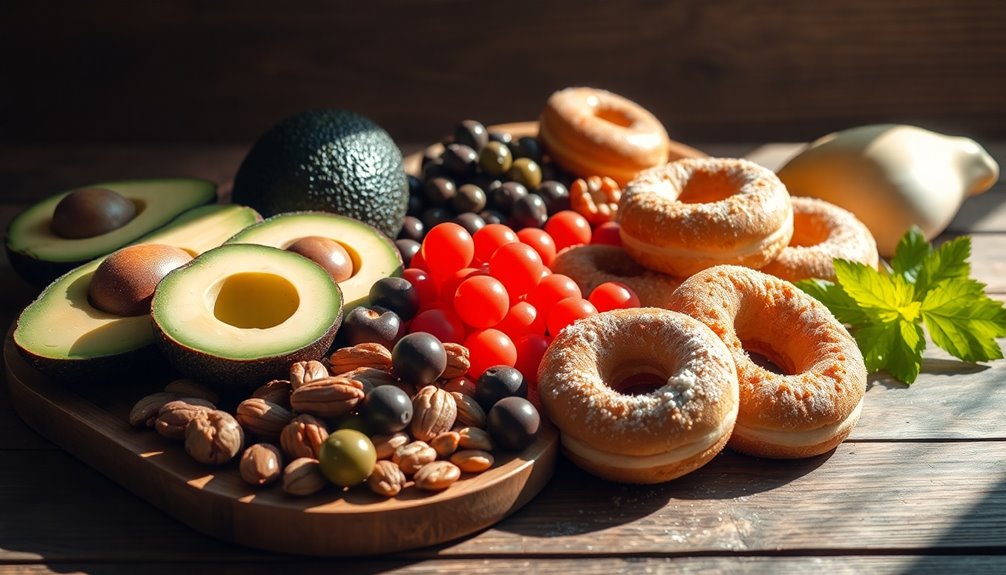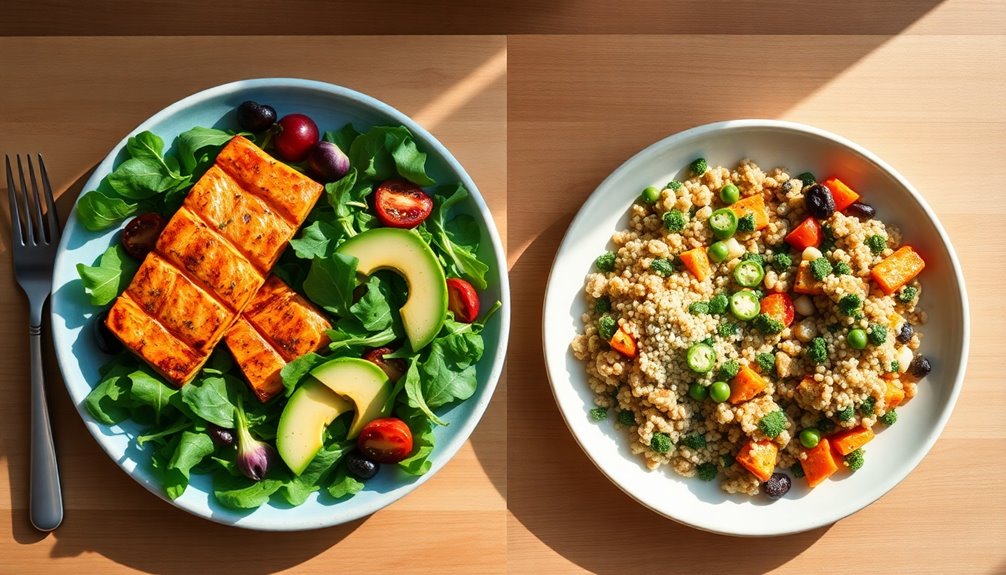A teaspoon of sugar equals 4 grams. This measurement is handy when you're trying to control your sugar intake. For reference, a 12 oz can of Pepsi contains about 41 grams, which is 10 teaspoons! Knowing these conversions can help you make better dietary choices. Keep in mind that the 2015-2020 Dietary Guidelines suggest limiting added sugars to less than 10% of your daily calories. Being aware of what you consume can promote a healthier lifestyle. Curious about how much sugar is in common foods or tips to cut back? There's more to explore!
Key Takeaways
- A teaspoon of sugar weighs approximately 4 grams.
- To convert grams to teaspoons, divide the grams by 4.
- 1 teaspoon of sugar is equivalent to 4 grams in nutrition labels.
- Measuring sugar in grams provides more accuracy than using teaspoons.
- Nutrition labels help identify total sugars, including added and naturally occurring.
Understanding Sugar Measurements
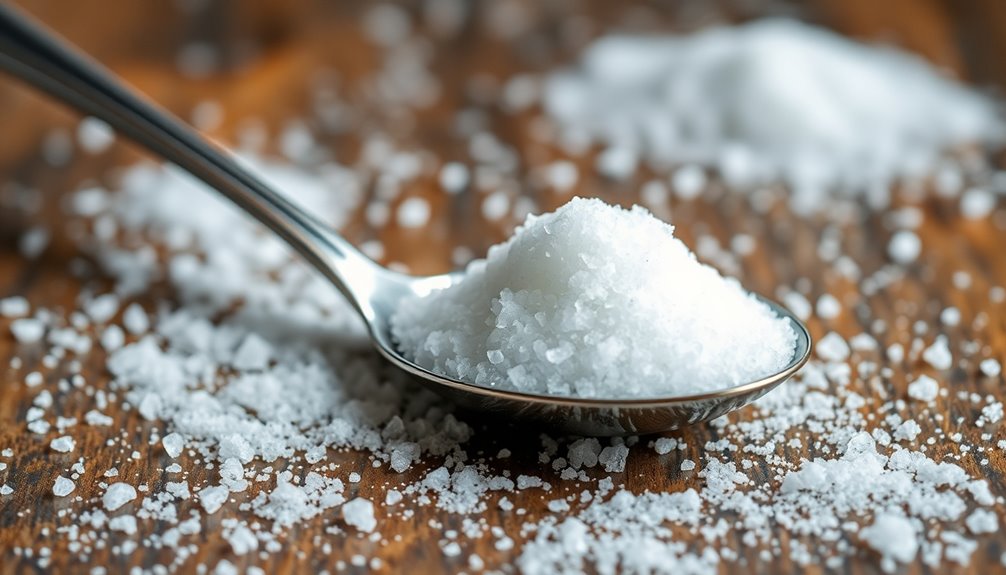
When it comes to understanding sugar measurements, it's vital to know that a teaspoon of sugar weighs about 4 grams. This simple conversion makes it easier for you to visualize and manage your sugar intake. If you want to convert grams of sugar to teaspoons, just divide the total grams by 4. For instance, if you come across a product with 16 grams of sugar, that's equivalent to 4 teaspoons of sugar.
Nutrition labels usually list total sugars, which include both added and naturally occurring sugars. By grasping this distinction, you can make healthier choices when selecting foods.
While measuring sugar in teaspoons is common, using grams can provide a more accurate understanding of sugar content, as density varies among different products.
Engaging kids in activities that involve measuring sugar can help them learn about sugar content and its health impacts. It's a fun and educational way to instill knowledge about sugar in their diets.
Sugar Content in Common Foods
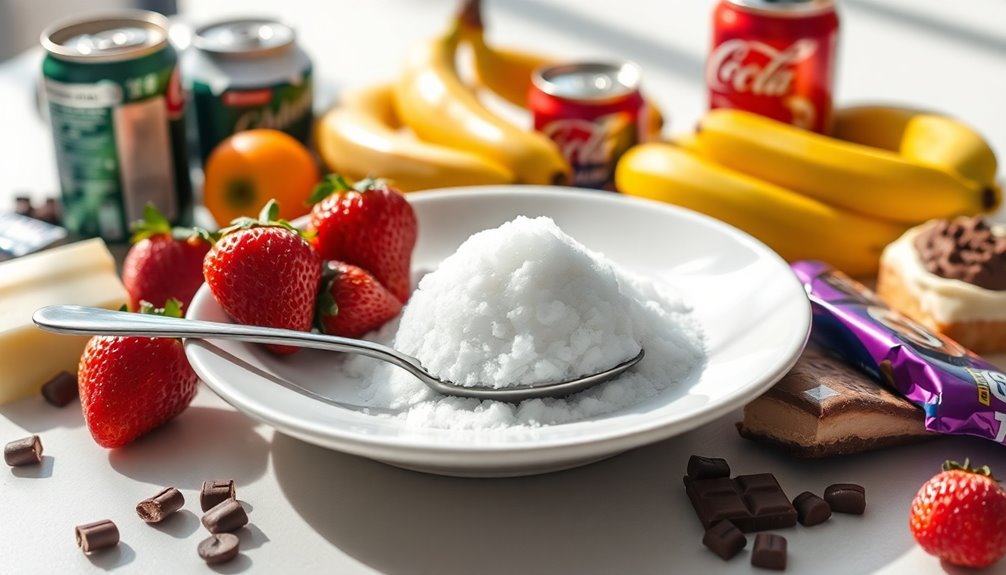
Many people are surprised by the sugar content in common foods and beverages. For instance, a 12-ounce can of Pepsi packs a whopping 41 grams of sugar, which translates to about 10 teaspoons. That's a significant amount of sugar for just one drink!
Similarly, if you reach for a 20-ounce bottle of Gatorade, you'll find around 34 grams of sugar, or about 8 teaspoons.
Candy lovers should take note, too. A serving of M&M's contains 31 grams of sugar, which is roughly 7.4 teaspoons. If Skittles are your go-to treat, you might want to reconsider; they boast a higher sugar content with 46 grams per serving, equating to approximately 11 teaspoons of sugar.
Even fruit snacks, often perceived as healthier options, can surprise you. They typically contain around 12 grams of sugar per serving, which is about 3 teaspoons.
Understanding the amount of sugar in these common foods helps you make informed choices. So, next time you indulge, keep these sugar counts in mind!
Health Impacts of Sugar Intake
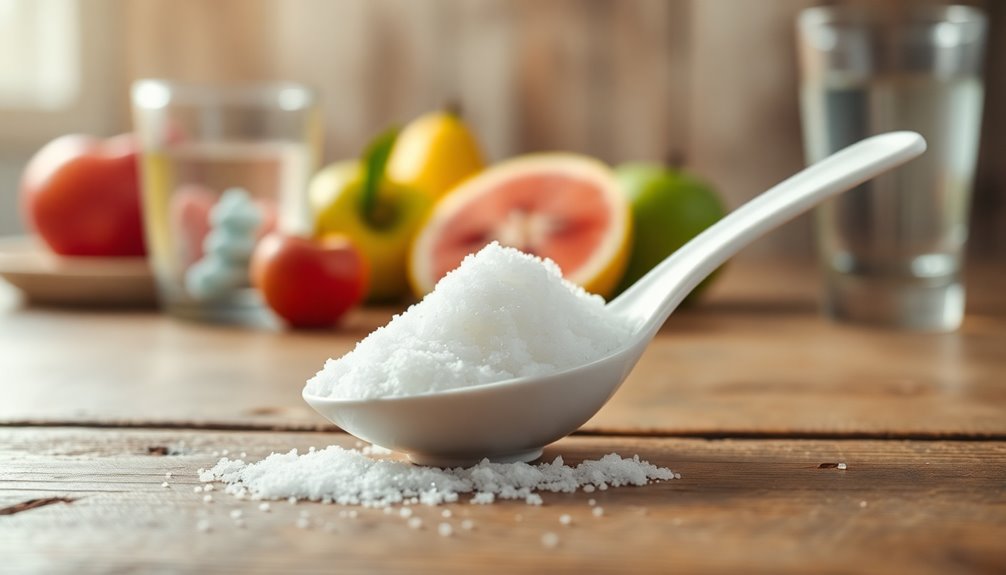
Excessive sugar intake poses serious health risks that can affect your well-being in significant ways. Here are three key health impacts of sugar intake you should be aware of:
- Obesity: High consumption of added sugars, especially from sweetened beverages, can lead to weight gain and obesity.
- Type 2 Diabetes: A diet loaded with sugar can increase your risk of developing insulin resistance, paving the way for type 2 diabetes.
- Heart Disease: Consuming too much sugar is linked to higher risks of cardiovascular diseases, which can jeopardize your heart health.
The 2015-2020 Dietary Guidelines recommend limiting added sugar intake to less than 10% of your total daily calories—about 50 grams or 12 teaspoons for a 2,000-calorie diet.
Additionally, high sugar consumption can wreak havoc on your dental health, leading to tooth decay as bacteria thrive on sugary substances, producing acids that harm your teeth.
Educating yourself about the sugar content in foods and drinks is vital for making healthier dietary choices and reducing the risk of chronic health conditions.
Being aware of the health impacts of sugar intake can empower you to make better decisions for your well-being.
Tips for Reducing Sugar Consumption
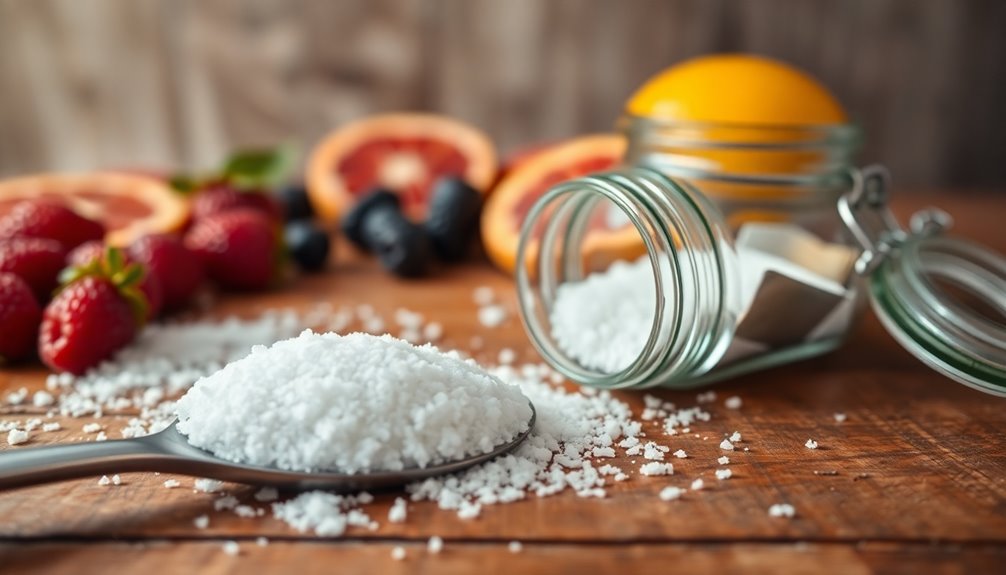
Understanding the health impacts of sugar intake is the first step toward making better choices for your diet. One effective way to reduce sugar consumption is by reading nutrition labels. They reveal the amount of added sugars in products, helping you choose options with lower sugar content.
Next, swap sugary beverages like soda, which can contain up to 10 teaspoons of sugar per can, for water or unsweetened drinks. This simple change can greatly lower your overall sugar intake.
You should also focus on incorporating more whole foods, such as fruits and vegetables, which satisfy sweet cravings and provide essential nutrients without the added sugars found in processed snacks.
Practicing portion control can help too. By measuring out sugar for cooking or baking, you'll visualize how much you're using—remember, four grams of sugar is about one teaspoon.
Finally, gradually reduce the amount of sugar you add to meals and drinks. This can help your taste buds adapt, making it easier to enjoy foods with less sweetness over time.
Importance of Nutrition Labels
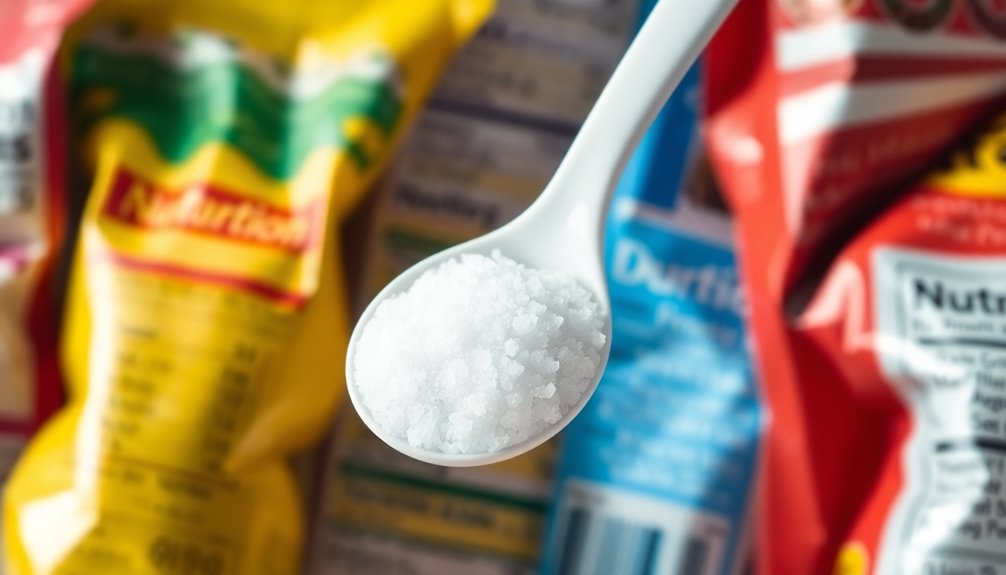
When you pick up a food product, nutrition labels are your key to making informed choices about what you eat. They reveal essential details, helping you navigate your dietary needs.
Here are three reasons why you should always check nutrition labels:
- Understanding Sugar Content: Nutrition labels show total sugars, which include both naturally occurring sugars and added sugars. This distinction is vital for managing your sugar intake, just as being aware of essential oils can help manage stress levels effectively.
- Visualizing Intake: Labels simplify things by rounding down sugar content to 4 grams per teaspoon. This makes it easier for you to visualize how much sugar you're consuming.
- Promoting Healthier Choices: By reading these labels carefully, you can select nutrient-dense foods and beverages, reducing the risk of diet-related diseases linked to excessive added sugars. In addition, being aware of meal replacement juices can help you choose options that align with your weight loss goals.
Being aware of total sugars and added sugars on nutrition labels enables you to make healthier decisions, ultimately supporting better overall health.
The more informed you're about what you're consuming, the easier it becomes to maintain a balanced diet.
Frequently Asked Questions
How Much Is 1 Teaspoon of Sugar?
When you're measuring sugar, 1 teaspoon's about 4.2 grams.
This simple conversion helps you understand how much sugar's in your food and drinks. If a nutrition label shows grams of sugar, just divide that number by 4.2 to find out how many teaspoons you're consuming.
By grasping this, you can better manage your daily sugar intake and make smarter choices about what you eat and drink.
It's all about staying informed!
What Is the Equivalent Measurement of 1 Teaspoon Sugar?
When you measure 1 teaspoon of sugar, you're looking at approximately 4 grams.
This simple conversion helps you track your sugar intake more easily, especially when reading nutrition labels. By knowing that 4 grams equals 1 teaspoon, you can visualize how much sugar you're consuming.
Whether you're cooking or monitoring your family's diet, this understanding allows you to make smarter, healthier choices regarding sugar consumption.
How Much Sugar Is Teaspoon Size?
Measuring sugar's like counting stars in the night sky; it can get overwhelming. A standard teaspoon holds about 4 grams of sugar, making it a handy reference for managing your intake.
When you think about it, if you're consuming a sugary snack, just divide the grams by 4 to get a clearer picture of how many teaspoons you're actually eating. This simple conversion can help you make healthier choices in your diet.
What Does 1g of Sugar Look Like?
When you think about what 1 gram of sugar looks like, you can visualize it as a small pinch or a tiny sugar cube.
It's not much, but it's a start! If you're measuring, remember that 1 gram is about 0.24 teaspoons.
For a clearer idea, try using a kitchen scale to weigh out sugar, which helps you understand how it adds up in your daily intake without going overboard.
Conclusion
In summary, knowing how much sugar's in your food can help you make smarter choices. With a teaspoon of sugar packing around 4 grams, it's easy to lose track of your intake. By being mindful of nutrition labels and reducing sugar where you can, you're taking the bull by the horns when it comes to your health. So, keep an eye on those sweeteners and take charge of your diet for a healthier you!
